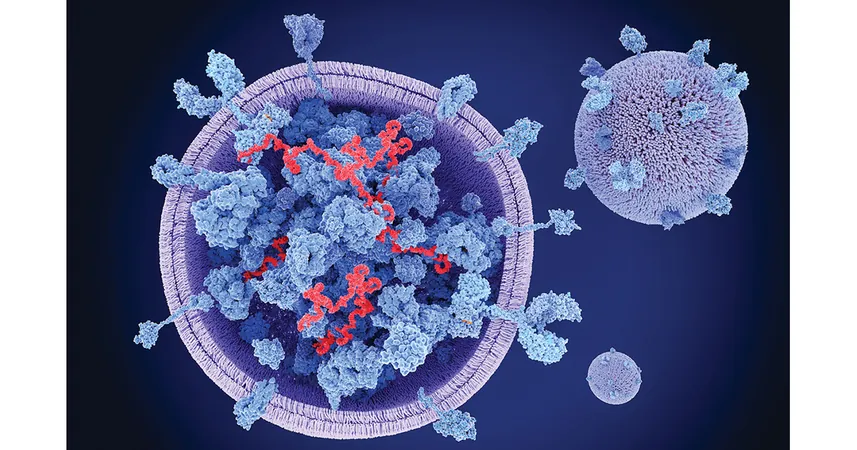
Breaking New Ground: Wnt Protein Leverages Exosomes for Cellular Communication
2024-12-12
Author: Noah
Introduction
Recent groundbreaking research from the Ottawa Hospital Research Institute and the University of Ottawa, in collaboration with the Centre for Genomic Regulation at the Barcelona Institute for Science and Technology, as well as Spain's Center for Cooperative Research in Biosciences, has unveiled how a member of the Wnt protein family successfully rides on cellular exosomes. This important study was published in the journal *Science Advances*.
Role of Wnt Proteins
Wnt proteins play a crucial role as signaling molecules in numerous biological processes, including tissue regeneration and the proliferation of stem cells. However, due to their hydrophobic and insoluble nature, these proteins struggle to travel long distances independently. Previous observations of long-range, paracrine Wnt signaling suggested that these proteins might hitch a ride on exosomes—tiny extracellular vesicles formed by the budding off of cell membranes and packed with proteins and RNA.
Focus on Wnt7a
The research specifically highlights Wnt7a, a Wnt protein known to be upregulated following skeletal muscle injury. Notably, intramuscular injections of Wnt7a into mouse models of Duchenne muscular dystrophy have shown promise in slowing the progression of this debilitating disease. While Wnt7a's inability to dissolve poses challenges for therapeutic use, its newfound association with exosomes could enhance its delivery to target sites.
Mechanism of Exosome Binding
The team discovered that Wnt7a possesses a specific amino acid sequence that enables it to bind to exosomes, especially through interaction with two coatomers, COPA and COPB2, found on muscle cell exosomes. This attachment facilitates the transport of Wnt7a to its required destinations within the body. Interestingly, when they transferred this binding sequence to a non-related peptide derived from a bacterial enzyme, it too exhibited the ability to attach to exosomes.
Further Research Needed
However, the research does not entirely clarify the entire journey of Wnt7a post-translation. According to Julia Gross, a biochemist at Potsdam University who was not part of the study, while the evidence supports the existence of the binding domain, further exploration is needed to fully understand how Wnt7a is trafficked outside the cell to become attached to exosomes.
Implications for Therapy
Lead researcher Michael Rudnicki noted that this development could pave the way for utilizing Wnt7a and exosomes in therapeutic strategies. “It suggests that we might potentially target any protein to the surface of exosomes, which holds significant potential for therapeutic applications, especially in directing those exosomes to specific cell types or tissues,” he stated.
Conclusion
This research marks a monumental step in understanding cellular communication mechanisms and opens new avenues for developing therapies targeting muscular dystrophies and possibly a range of other diseases. As the scientific community looks forward to ongoing studies, the implications of this discovery could reshape the future of targeted drug delivery systems. Stay tuned for more groundbreaking updates in the world of biomedical research!









 Brasil (PT)
Brasil (PT)
 Canada (EN)
Canada (EN)
 Chile (ES)
Chile (ES)
 España (ES)
España (ES)
 France (FR)
France (FR)
 Hong Kong (EN)
Hong Kong (EN)
 Italia (IT)
Italia (IT)
 日本 (JA)
日本 (JA)
 Magyarország (HU)
Magyarország (HU)
 Norge (NO)
Norge (NO)
 Polska (PL)
Polska (PL)
 Schweiz (DE)
Schweiz (DE)
 Singapore (EN)
Singapore (EN)
 Sverige (SV)
Sverige (SV)
 Suomi (FI)
Suomi (FI)
 Türkiye (TR)
Türkiye (TR)